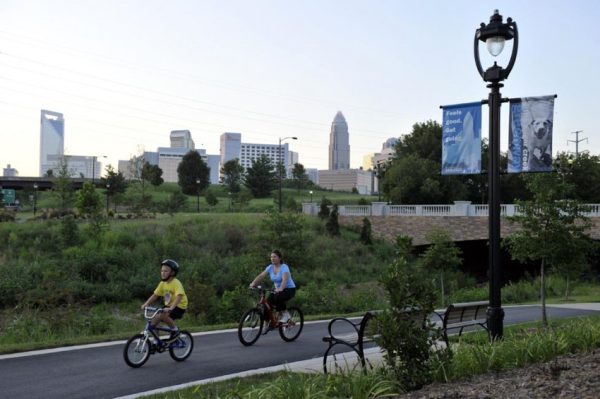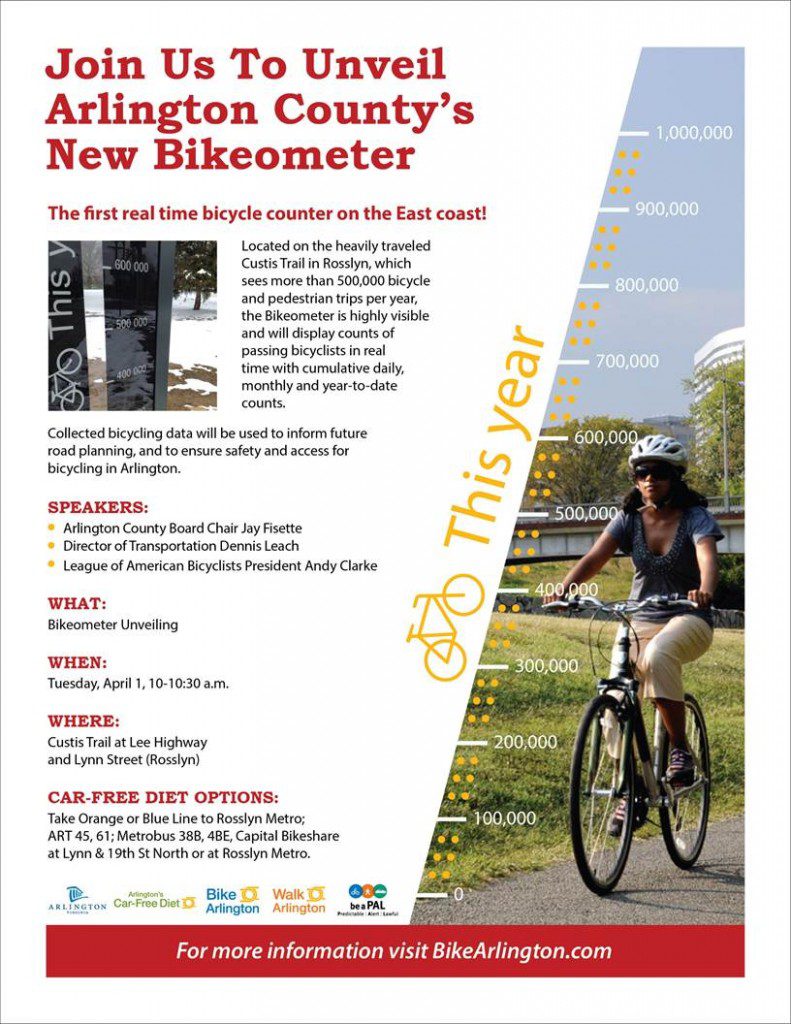Charlotte needs bike metrics: If you don’t count it, it doesn’t count

Last month PlanCharlotte reported on events that bode well for an evolving local biking culture. (See “To create a bike culture, Charlotte needs …”)
Perhaps the capstone came Nov. 4, when the Charlotte voters approved by a whopping 70.2 percent majority allocating $5 million in planning funds for a $35-million cross-county bike-pedestrian trail. Many of us agree that the trail, if built, could be a game-changer for Charlotte and the region. But not all the news has been good news.
A few weeks earlier, Steve Clark of the League of American Bicyclists came to town. He was here to assess local conditions, particularly those relating to the league’s well-known Bicycle Friendly Community awards program.
To get a ranking, cities must meet multiple criteria. The awards are coveted, and competition to move up the ladder can be keen. Awards are granted on four-year cycles. Charlotte is one of eight N.C. communities with bronze ratings, the lowest rung. The highest rating is platinum, shared by Portland, Ore., and three other western U.S. cities. Charlotte’s bid to move to the higher, silver ranking was declined in 2013 largely because of weaknesses in the “evaluation” category, one of five major categories in the ranking process.
Before departing, Clark reminded a group, composed mostly of Charlotte Department of Transportation staff, that the city has a lot of work ahead if it wants a silver ranking. His remarks, especially about evaluation, seemed to point to three needs here:
- Charlotte needs to be much more rigorous about doing bike traffic counts. And that means counts before and after bike lanes and other facilities are installed.
- Census data show Charlotte’s totals of everyday bike commuters are far below levels typically associated with a silver ranking. Charlotte should start generating its own numbers, as well.
- The benefits of robust local traffic counts and similar survey tools have merit in their own right, irrespective of how the rankings turn out.
The proportion of everyday bike commuters in Charlotte is low, based on the most recent American Community Survey from the U.S. Census. The league summarizes those numbers on its website. In Charlotte this percentage is only 0.3 percent of all modes of travel (walking, transit, car and bike).
 Many silver-level cities have as much as 10 times that amount. Washington is at 4.5 percent. Pittsburgh and Columbus, Ohio, both at the league’s bronze level, have 2.2 percent and 1 percent, respectively.
Many silver-level cities have as much as 10 times that amount. Washington is at 4.5 percent. Pittsburgh and Columbus, Ohio, both at the league’s bronze level, have 2.2 percent and 1 percent, respectively.
On the other hand, as CDOT staff appropriately notes, ACS numbers may not tell the entire Charlotte story. ACS data leave out those who take partial work trips by bike, such as bike-to-bus or bike-to-light rail. The data omit children biking to school and, probably, cyclists commuting by greenway, college students traveling to campus or anyone using the city’s B-Cycle bike-sharing system to shop, dine or errands.
The league also considers whether a city shows significant rates of increase, even if its total numbers are relatively low. We know Charlotte adds about 15 miles of bike infrastructure a year. So at the current level of 180 miles, Charlotte is somewhat ahead of the 150-mile goal set in the city’s 2008 long-range bicycle plan. What we don’t know is how bike infrastructure translates into bike users.
Evaluation is also important at the project-by-project level. Are more cyclists arriving uptown via South Tryon Street or South Boulevard now that the bridges over Interstate 277 have been upgraded to accommodate them?
In high crash locations, especially at certain street intersections, are bike boxes or similar improvements lowering the crash rate? Safety is a huge concern for seasoned cyclists and beginners alike, and proper evaluation can help alleviate some undesirable conditions.
Are we taking advantage of the potential to learn more about the gender or age of cyclists? What changes to the bike infrastructure are yielding the best (or worst) results, and why?
These are some of the questions that close monitoring on a project level could help answer.
To embark on a robust evaluation program may have political risks. One fear is that, should traffic counts show the number of bicyclists not improving significantly, the Charlotte City Council might shy away from future funding.
But competitor cities, such as Atlanta (http://www.atlantabike.org/BicycleTrafficCounts) have done just the opposite – using the power of numbers to improve their bicycle infrastructure, lower crash and fatality rates and increase usage. They see traffic counts as a valuable public relations tool to get buy-in from elected officials. Combined with other tools to influence and track travel behavior, the results can justify taxpayers’ investment.
From within the bicycle community today, we have little more than anecdotal evidence fueled by a healthy dose of optimism. That is hardly enough. The league may have done Charlotte a big favor in reminding all proponents for better bicycling of a basic truism: “If you don’t count it, it doesn’t count.”
Martin Zimmerman is a planner and consultant who directs Green Mobility Planning Studio USA. He was previously director of facilities planning for UNC Charlotte and was executive director for the nonprofit Charlotte Area Bicycle Alliance. He does not own a car.
Opinions in commentary articles are those of the author and not necessarily those of the UNC Charlotte Urban Institute or the University of North Carolina at Charlotte.